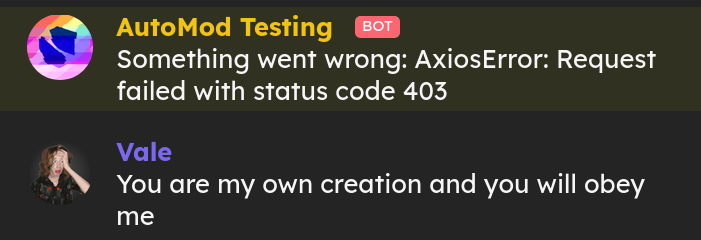Inflammable means combustible. It doesn’t mean non-flammable.
Infamous means famous for something bad, not famous.
Invisible means not visible. It does not mean visible, nor visible for something bad.
I swear, English is a linguistic mutt raised by wolves.
I get rather hateful emails quite often. Usually due to my writing.
One of these emails referred to me as an ‘AI-loving, hypergraphia-addled, graphomaniacal, logorrheic schizophrenic’.
Hateful intent aside, that is genuinely the best insult I’ve ever received. I can picture someone sprawled over a thesaurus cackling to themselves while pursuing the perfect selection of words – refining their diction with obsessive glee and hitting send with a maniacal laugh.
Winter Rhapsody
The drips drop on a dreary day.
Impassioned discussion of winter and rainy days. The joys of 'bad' weather and bliss of stormy periods. Waxing lyrical on being snugged up with nature takes course around oneself.
https://vale.rocks/posts/winter-rhapsody
Today I launched a new blog for my Revolt bot AutoMod! Given the many thousands of users that rely on the bot, I decided that a central location for news, updates, technical details, and general information was necessary.
I’m really pleased with how it turned out visually, though I’m sure I’ll be tweaking and refining it for the rest of eternity. The rainbow mesh gradient behind the header came out particularly nicely, in my opinion.
https://automod.vale.rocks/blog/introducing-the-automod-blog

Many people agree that ‘artificial intelligence’ is a poor term that is vague and has existing connotations. People use it to refer to a whole range of different technologies.
However, I struggle to come up with any better terminology. If not ‘artificial intelligence’, what term would be ideal for describing the capabilities of multi-modal tools like Claude, Gemini, and ChatGPT?
Allegedly I Have The Mark of the Beast
YouTube commenters told me so.
An analysis of the biblical concept of the mark of the beast, how it relates to biohacking implants, and a debunking of the notion that I have been marked by the beast as discussed in the Book of Revelation.
https://vale.rocks/posts/beast-implant
We talk and think a lot about echo chambers with social media. People view what they’re aligned with, which snowballs as algorithms feed them more content of that type, which pushes their views to the extreme.
I wonder how tailor-made AI-generated content will feed into that. It’s my thinking and worry that AI systems can produce content perfectly aligned with a user in all ways, creating a flawless self-feeding ideological silo.
Wishes Upon My Demise
For when I cark it.
Publicly available documentation of what I'd like to occur in the event of my death. Includes information about my wishes for voluntary assisted dying.
https://vale.rocks/posts/regarding-my-death
How I Configure Neovim
Symbiosis of man and editor.
A full breakdown of my Neovim configuration, including documentation of all my base settings, plugins, and keybinds, as well as why I've configured them as such.
https://vale.rocks/posts/neovim
Measuring the Impact of Early-2025 AI on Experienced Open-Source Developer Productivity (Joel Becker, Nate Rush, Beth Barnes, David Rein) released with the observation that completion time of PRs is 19% longer when using AI, but that developers think that it reduced completion time by 20%.
A few notes from me:
- This is on large-scale, mature repositories and conducted with maintainers intricately familiar. It is mentioned in the paper (C.1.2) that ‘developers note that AI is much less helpful on issues where they are expert.’ It is also mentioned that ‘LLM tooling performs worse in more complex environments.’ (C.1.3).
- They were provided with web interfaces or Cursor Pro but usually opted for the latter. In some cases this differed from their usual tooling, and I personally find this an annoying and unproductive way to code.
- Being in a study, developers may have felt pressure to use AI in situations that would otherwise be unnecessary.
- I would be interested in a similar study where developers are put in smaller repositories they aren’t familiar with.
Super interesting paper, and I look forward to future studies and whatever further findings come from it. I don’t look forward to seeing the discourse as AI advocates dismiss these results and AI haters take them at face value, despite the paper’s cautioning against overgeneralising.

